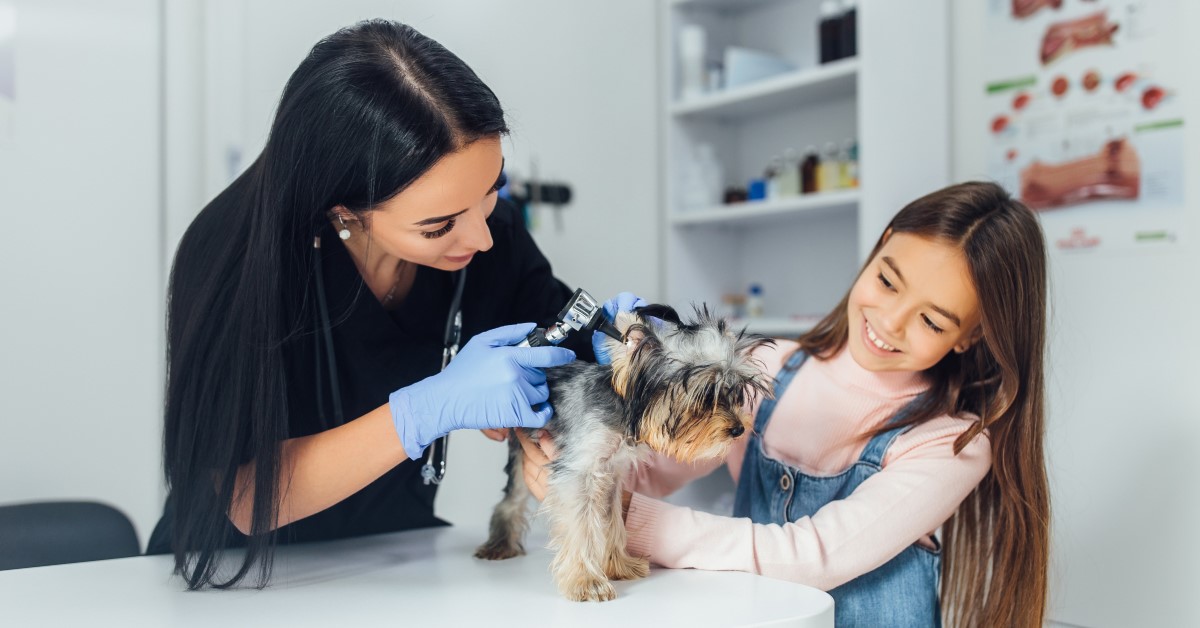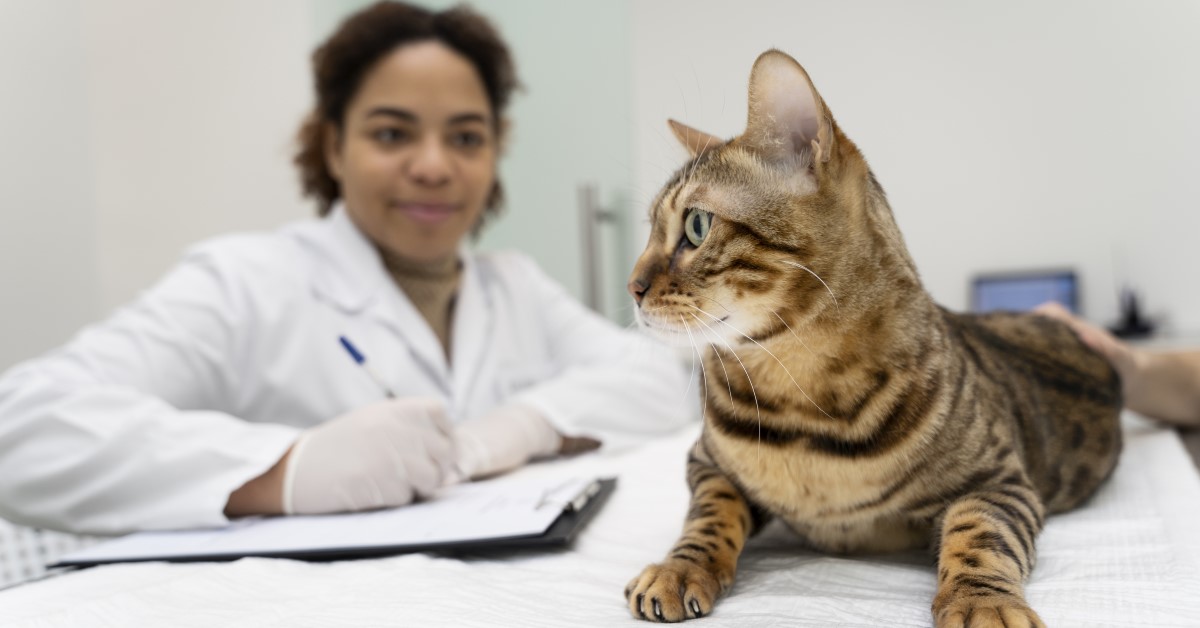Tips for Pets Afraid of the Vet
By practicing a veterinary exam at home and learning specialized behaviors, it is possible to reduce pet anxiety at the vet's office.

Taking your pet to the veterinarian's office is a part of the routine and necessary pet care. But, a trip to the veterinarian's office can be stressful for both you and your pet. If you are struggling with a nervous pet, veterinarian appointments can become a hassle. Luckily, there are practical and easy tricks and tips that can help reduce anxiety at the vet's office and allow both pet and owner to relax and stay calm through an entire appointment.
Practice Makes Perfect
One of the best ways to help an anxious pet is to put in the time practicing a routine visit to the veterinarian's office. Try to run through a typical visit, including taking your pet for a ride in the car. You'll want to practice touching your cat or dog like a vet would and make sure your pet is comfortable with its feet, legs, and stomach touched. Work with your pet patiently, and be sure to use a calm and steady voice to reassure your pet. When you practice touching and inspecting various parts of your pet at home, your pet will be more familiar with the process when you go to your next veterinarian appointment.
Teaching your pet certain commands and behaviors can also help with your veterinarian visit. Not only are basic behaviors helpful for the vet, but they can help to keep your dog focused on performing the task at hand rather than stressing about the impending examination. Some of the most useful commands to teach your pet include,
- Sit and Stay - Having your pet understand how to sit politely in one place can help your veterinarian perform the necessary inspections.
- Side - Teach your pet to roll onto its side. While laying on their side, the veterinarian can examine your pet's stomach and listen to its heart and lungs.
- Place - Place is a valuable command that can help your pet move to one location and stay. The place command can be used for weighing your pet on the scale or can be used to get your pet to move onto the examination table.
Make the Veterinarian a Friend
If your pet always associates a trip to the vet's office with a stressful day, it can further exacerbate a lousy situation causing more anxiety with every appointment. It can help a stressed pet to make the veterinarian a friend. Try to take your pet to the veterinarian's office socially to teach your pet that friendly people are working in the office. When your pet connects the veterinarian's office with a positive experience, it can help to reduce anxiety and make your pet calmer at the veterinarian's office.
Empty the Fuel Tank
If a pet is nervous at the veterinarian's office, it may result from too much energy. Taking your pet for a long walk to exercise before your vet appointment can help keep your dog calm and eliminate pent-up nervous energy. Try a lengthy play session or a fun game of fetch before your next appointment. If your pet is a little tired at the appointment, it can help keep them calm through the examination.
Medicate If Necessary
Several medications can be prescribed to help keep your pet calm during a vet appointment. Using different medications can calm your pet and reduce anxiety and stress levels. Prescription medication is a great tool to use that helps to keep your pet relaxed and can eventually be discontinued the more your pet has positive experiences with the vet's office. If you have a nervous or anxious pet, try speaking with your veterinarian about trying calming medication.
Set Your Pet Up for Success
You want your pet to have a positive experience at the vet's office and give them every chance to succeed. Sometimes, using restraining devices, like a muzzle, can make the appointment run more smoothly. While a muzzle may seem harsh or inhumane, understand that the muzzle is simply a tool to protect the veterinarian and complete the exam as quickly as possible.
Before using a muzzle at the veterinarian's office, be sure to practice ahead of time at home. You'll want to start by only putting the muzzle on for a few minutes at a time, gradually increasing the time your pet has to wear the muzzle. Be sure to give plenty of treats and praise to your pet through the process. By practicing the muzzle at home, your pet will be more comfortable at the veterinarian's office.
Find a Specialist
Many pets experience anxiety at the vet's office, and some veterinarians are creating innovative fear-free facilities to help struggling pets. If you have an anxious pet, it may make sense to seek out a fear-free veterinarian's office. These vets understand how stressful a visit can be and work to create calming environments. A fear-free facility may work to examine your pet on the floor instead of a cold exam table or even examine your pet outdoors, where your pet will feel calm.
Some specialist veterinarians will even make house calls and come to your home to examine and treat your pet. Having a professional come to your house keeps your pet in a familiar and soothing environment. Your pet can be surrounded by familiar sounds, smells, and sights, which can help reduce anxiety.
Calm Yourself
If you are nervous with your pet at the veterinarian's office, the stress and nervous energy you are feeling can translate to your pet. Your pet can feel the nervous tension in the exam room, and in turn, become more nervous themselves. One of the best ways to keep your pet calm through an exam is to stay calm yourself. Understand that you are with professionals, and trust that your pet will be alright through the exam. Remember to remain calm and patient and trust that your hard work and training will pay off for the appointment duration.
Ready to start saving money on pet wellness care?
Then take a look at Mint Wellness, the pet wellness plan that provides fast reimbursement on routine pet care. Save on vaccinations, wellness exams, preventatives, dental, and more!
Learn More


